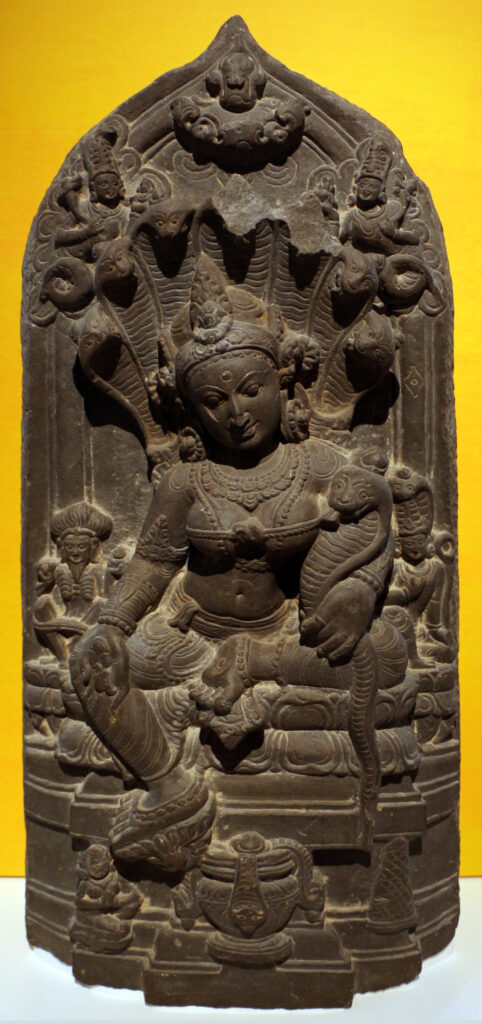
Table of Contents (The Complete Mahabharata in Simple English)
Previous Post: The Churning of the Ocean Begins
| Note: In the previous post, we read about how Brahma and Vishnu gave the gods and asuras permission to churn the ocean for nectar. We also read that they used Mount Mandara as a churning rod, the king of tortoises as the base for the rod, and Vasuki (the serpent chief) agreed to be used as the churning rope. Thus the churning began. I would like to point out that all this is deeply symbolic of certain spiritual practices and also, possibly, related to the preparation of certain medicines. I don’t have specific details, but those who would like to find out more are encouraged to seek it through spiritually advanced teachers. To start with, here’s an article that explains the yogic allegory of Samudra Manthan. This article explains it from the perspective of Kriya Yoga, and this thread on Quora has several other explanations. In this post, we will read about what happened when the churning began. These events are also symbolic in nature. |
While churning the ocean, the asuras held Vasuki on the side of his hood and the gods held him on the side of his tail. Ananta, the mighty snake, was on the side of the gods. Ever so often, he would go on the other side to raise and drop Vasuki’s hood.
Because Vasuki’s body was being stretched during the churning, he issued black vapors and flames from his mouth.
These vapors and flames, aimed towards the sky when Ananta raised the hood, turned into clouds with lightning. And the clouds burst forth into rain which refreshed the tired gods. Since Mount Mandara was also twisted during the churning, its flowers fell on all sides refreshing those who were engaged in churning the ocean.
Then a tremendous roar resounded from the depths of the ocean. It sounded like the great roar that is heard at the dissolution of the universe. Many aquatic animals and beings of the lower regions were crushed and killed by the great Mount Mandara. Also, large trees were torn out, from their roots, as the mountain whirled. These trees along with the birds that lived on them were flung into the churning ocean. Every time these trees rubbed against each other, the friction caused flames to blaze up and the fire spread to the slopes of the mountain burning lions, elephants, and other creatures that lived on it. After some time, Indra caused a heavy downpour of rain to extinguish the fire.
Thus the churning continued with the ocean full of trees and herbs that constantly rubbed against each other as they were tossed about in the waters. After some time, the gum of several trees and herbs that had the properties of amrit mingled with the ocean’s water. The celestials drank that water containing plant extracts mixed with a liquid extract of gold and attained immortality.
As the churning continued, the herb and tree extracts caused the milky waters of the deep ocean to turn into clarified butter.
However, even though the waters of the ocean were filled with the properties of amrit, the real amrit that everyone was hoping for did not arise. By now, the gods and asuras were so exhausted that they had no more strength left to churn further.
Unable to proceed, the gods approached the boon-granting Brahma and said, “O sire, nectar has still not arisen from the ocean and we are very tired to churn further. Now, our only hope is if Narayana helps us.”
Upon hearing their problem, Brahma requested Narayana to help the gods, and Narayana blessed them with further strength to churn the mountain.
| Note: In the next post, we will read about the glorious beings that arose from the ocean as the churning continued and what happened when the deadly Kalakoot poison emanated from the waters. |
Next Post: Neelkantha Mahadeva Saves the World From the Kalauta Poison
Table of Contents (The Complete Mahabharata in Simple English)
Image Credit: By 245CMR – Own work based on: Sagar mathan.jpg, CC BY 3.0, https://commons.wikimedia.org/w/index.php?curid=106963683


